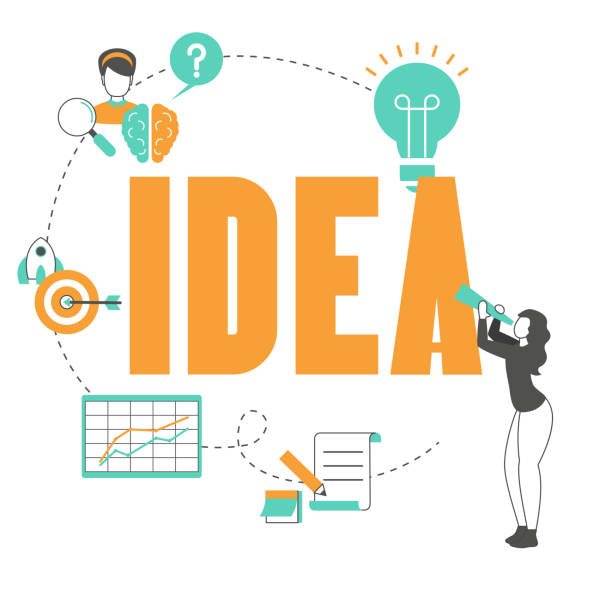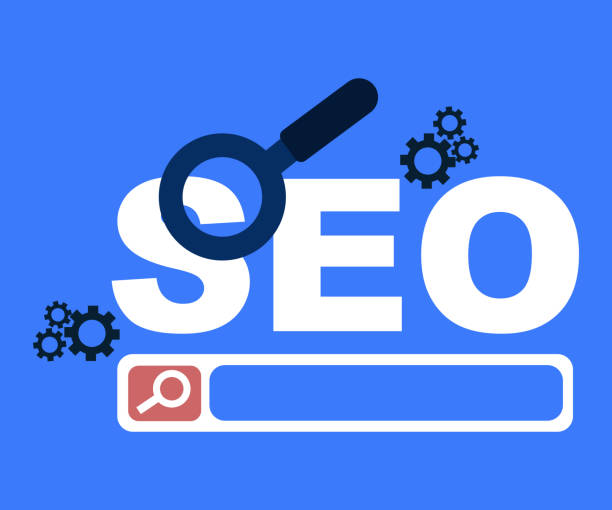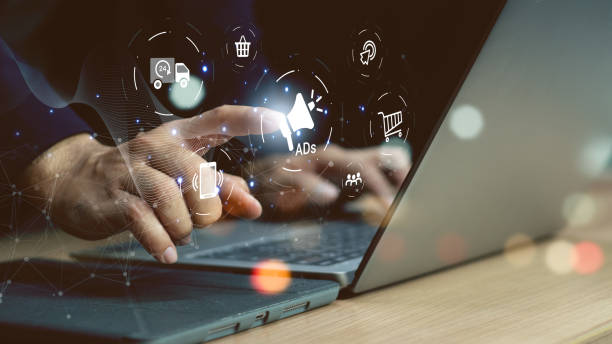### What is On-Page SEO and Why is it Important?

On-Page SEO (#OnPageSEO) refers to a set of actions that are performed within a website to improve the site’s ranking in search engines like Google.
These actions include optimizing content, site structure, HTML tags, and other related factors.
The importance of On-Page SEO stems from the fact that search engines use these factors to better understand the site’s content and its relevance to user searches.
A strong On-Page SEO strategy can lead to increased organic traffic, improved user experience, and increased conversion rates.
To better understand this, imagine your site as a storefront that needs to be arranged in the best possible way to attract customers.
SEO here plays the role of arranging this storefront.
Without On-Page SEO, your site may get lost among millions of other sites and never reach its target audience.
On-Page SEO includes various aspects, each playing an important role in improving the site’s ranking.
Among the most important of these aspects are optimizing titles and meta descriptions, using appropriate keywords in the content, improving page loading speed, creating a suitable URL structure, and optimizing images.
Each of these factors helps search engines better understand the content of the site and show it to relevant users.
Also, user experience (UX) plays an important role in On-Page SEO.
A site that has an attractive design, easy navigation, and valuable content attracts more users and, as a result, gains a better ranking in search engines.
Therefore, On-Page SEO is not only limited to technical optimization, but also includes improving the overall user experience.
Does your current online store design not generate the sales you expect?
Rasaweb specializes in professional online store design!
✅ An attractive and user-friendly site aimed at increasing sales
✅ High speed and security for an ideal shopping experience⚡ Get a free online store design consultation with Rasaweb!
Keyword Research, the Foundation of On-Page SEO

Keyword research is the first and most important step in an On-Page SEO strategy.
This process involves identifying the words and phrases that users use to search for information related to your business.
By identifying these keywords, you can optimize your content in such a way that you get a higher ranking in search results.
To do keyword research, you can use various tools such as Google Keyword Planner, Ahrefs, and Semrush.
These tools help you identify search volume, competition level, and related keywords.
After identifying the keywords, you must use them strategically in your content.
This includes using keywords in titles, meta descriptions, body text, and HTML tags.
However, you should avoid using too many keywords (keyword stuffing), as this can lead to your site being penalized by search engines.
Natural and relevant use of keywords is the best way to optimize content.
In addition to using tools, you can also use other methods for keyword research.
For example, you can visit your competitors’ websites and review their keywords.
Also, you can use feedback and suggestions from your customers to find out what words and phrases they use to search for your products and services.
Remember that keyword research is an ongoing process and you should regularly identify new keywords and add them to your On-Page SEO strategy.
By doing proper keyword research, you can ensure that your content is properly optimized and reaches your target audience.
Also, keep in mind that On-Page SEO is an ongoing process and requires review and updating to always achieve the best results.
Content Optimization, the Beating Heart of On-Page SEO

Content is king! This famous phrase in the world of On-Page SEO shows the high importance of quality and optimized content.
Quality content is content that provides valuable information to users, meets their needs, and encourages them to interact with the site.
To optimize content, you should pay attention to a few key points.
First, your content must be unique and original.
Copying other people’s content can lead to your site being penalized by search engines.
Second, your content should be updated regularly.
Old and outdated content loses its value and cannot attract users.
Third, your content should be structured correctly.
Using titles, subtitles, paragraphs, and lists helps readers easily understand your content and find the information they need.
In addition, you should also pay attention to the use of keywords in the content.
Keywords should be used naturally and relevantly in the text.
Using too many keywords can lead to your site being penalized.
Also, you should pay attention to the length of the content.
Long and comprehensive content usually gets a better ranking in search engines, but you should make sure that your content is not boring and uninteresting.
To increase the attractiveness of the content, you can use images, videos, and infographics.
These visual elements can help attract users’ attention and improve user experience.
Finally, you should also pay attention to the on-page SEO of images.
Using proper alt tags for images helps search engines understand the content of the images and display them in search results.
Content optimization is a complex process, but by following these tips you can ensure that your content is properly optimized and reaches your target audience.
Don’t forget that On-Page SEO is not possible without strong and valuable content.
Proper URL Structure, the Key to Easy Navigation

URL structure is an important aspect of On-Page SEO that is often overlooked.
A proper URL structure helps search engines and users easily understand the content of the site and access the pages they want.
To create a proper URL structure, you should pay attention to a few key points.
First, URLs should be short and descriptive.
Long and complex URLs are difficult for users and search engines.
Second, URLs should include relevant keywords.
Using keywords in URLs helps search engines better understand the content of the page.
Third, URLs should follow a hierarchical structure.
This means that URLs should start from the main page of the site and reach the sub-pages in order of importance.
For example, the URL of a product page should include the product category name and the product name.
In addition, you should pay attention to using hyphens (-) instead of underscores (_) in URLs.
Search engines consider hyphens as word separators, while they ignore spaces.
Also, you should avoid using uppercase letters in URLs.
URLs should always be written in lowercase letters.
A proper URL structure not only helps improve On-Page SEO, but also improves user experience.
Users who can easily access the pages they want are more likely to stay on your site and interact with your content.
Therefore, optimizing the URL structure is one of the actions that you should not overlook in your On-Page SEO strategy.
Remember that a good URL structure is like a road map that guides users and search engines to the content they want.
| Feature | Description |
|---|---|
| Length | Short and concise |
| Keywords | Includes relevant keywords |
| Structure | Hierarchical |
| Letters | Lowercase |
| Separator | Hyphen (-) |
Do visitors leave your online store site before buying? Don’t worry anymore! With Rasaweb’s professional online store design services, solve the problem of not converting visitors into customers forever!
✅ Significant increase in conversion rate and sales
✅ Unique and attractive user experience
⚡ Contact us now for a free consultation!
Optimizing Titles and Meta Descriptions, Attracting Clicks in Search Results

Titles and meta descriptions are the first things that users see in search results.
Optimizing these elements plays an important role in attracting clicks and increasing organic traffic.
The page title (Title Tag) should be short, descriptive, and include the main keyword.
The length of the title should be between 50 and 60 characters to be fully displayed in search results.
The page title should be such that it encourages users to click on your site link.
The meta description should also be short, attractive, and include key information about the content of the page.
The length of the meta description should be between 150 and 160 characters.
The meta description should be such that it convinces users that your page meets their needs.
To optimize titles and meta descriptions, you can use various tools such as Yoast SEO and Rank Math.
These tools help you properly optimize titles and meta descriptions and ensure compliance with On-Page SEO standards.
In addition, you should note that titles and meta descriptions should be unique for each page of the site.
Using duplicate titles and meta descriptions can lead to your site being penalized by search engines.
Also, you should note that titles and meta descriptions should match the content of the page.
Misleading users with irrelevant titles and meta descriptions can lead to a decrease in engagement rate and an increase in bounce rate.
Optimizing titles and meta descriptions is one of the simplest and most effective ways to improve On-Page SEO.
By spending a little time and effort, you can optimize your titles and meta descriptions and increase your site’s organic traffic.
Remember that titles and meta descriptions are like the advertising board of your site in search results.
Therefore, you should design them in such a way that they attract users’ attention and encourage them to click.
Improving Page Loading Speed, a Unique User Experience

Page loading speed is one of the most important factors in On-Page SEO and user experience.
Users who have to wait a long time for a page to load are more likely to leave your site and visit your competitors’ site.
In addition, Google also considers page loading speed as one of the ranking factors.
Therefore, improving page loading speed plays an important role in improving your site’s ranking in search engines.
To improve page loading speed, you can use various methods.
First, you should optimize your images.
Large and unoptimized images can significantly reduce page loading speed.
You can use various tools to compress and optimize images.
Second, you should use browser caching.
Browser caching helps users load your site pages faster, because the static files of your site are stored in the user’s browser and do not need to be reloaded.
Third, you should use a CDN (Content Delivery Network).
CDN helps you distribute your site content to different servers around the world.
This allows users to receive your site content from the server closest to them and increases page loading speed.
Fourth, you should optimize your HTML, CSS, and JavaScript code.
Unoptimized code can reduce page loading speed.
You can use various tools to compress and optimize the code.
Improving page loading speed is an ongoing process and you should regularly check your site speed and take necessary actions if needed.
By improving page loading speed, you can improve your site’s user experience, reduce bounce rate, and increase your site’s ranking in search engines.
Page loading speed is like the heartbeat of your site.
The stronger the heartbeat, the healthier and more efficient your site will be.
On-Page SEO with high speed will have the best performance.
Mobile Optimization, an Unavoidable Necessity

With the increasing use of mobile devices, mobile optimization has become an unavoidable necessity in On-Page SEO.
Google also considers mobile optimization as one of the ranking factors.
A site that is not optimized for mobile devices will not get a good ranking in search results.
To optimize for mobile, you should pay attention to a few key points.
First, your site should be responsive.
A responsive site automatically adapts to the screen size of different devices.
This allows users to easily view your site on any device.
Second, you should use a simple and user-friendly design.
Complex and cluttered designs are annoying for mobile users.
Third, you should use readable fonts and a suitable size.
Small and unreadable fonts make it difficult for mobile users to read the content of the site.
Fourth, you should use optimized images and videos.
Large and unoptimized images and videos can reduce page loading speed on mobile devices.
Fifth, you should use large and touchable buttons and links.
Small and untactile buttons and links are annoying for mobile users.
Mobile optimization is not only limited to responsive design.
But it also includes improving user experience on mobile devices.
Users who can easily navigate your site and find the information they need are more likely to stay on your site and interact with your content.
Mobile optimization is like a suitable dress for a party.
If your clothes are not suitable, you may not get into the party.
In On-Page SEO, being optimized for mobile is paramount.
| Aspect | Description |
|---|---|
| Responsiveness | The site should automatically adapt to the screen size of different devices |
| Design | The design should be simple and user-friendly |
| Font | Fonts should be readable and of a suitable size |
| Images and Videos | Images and videos should be optimized |
| Buttons and Links | Buttons and links should be large and touchable |
Using Internal Links, Creating a Network of Content
![]()
Internal links are links that connect a page of your site to another page of the same site.
Using internal links is one of the most important techniques of On-Page SEO.
Internal links help search engines better understand the structure of your site and identify the more important pages of your site.
Also, internal links help users easily navigate your site and find the information they need.
To use internal links, you should pay attention to a few key points.
First, the links should be relevant.
Linking a page to an irrelevant page is not only not useful, but can also be harmful.
Second, the links should be natural.
Using too many internal links can seem artificial and lead to your site being penalized by search engines.
Third, the links should point to the more important pages of your site.
Fourth, you should use proper Anchor texts.
Anchor text is the text on which the link is located.
Anchor text should be descriptive and include a relevant keyword.
Internal links are like blood vessels in the human body.
They connect different pages of your site and help the flow of information on your site.
By using internal links, you can create a strong network of content and improve your site’s ranking in search engines.
On-Page SEO without strong internal linking is a major shortcoming.
How much does losing business leads due to an unprofessional site cost you? Solve this problem forever with professional corporate website design by Rasaweb!
✅ Increase credibility and trust of potential customers
✅ Easier attraction of new business leads
⚡ Get a free consultation now!
XML Sitemap, a Guide for Search Engines

An XML sitemap is a file that contains a list of all the pages on your site.
This file helps search engines find all the pages of your site and index them.
The XML sitemap is like a road map for search engines.
This map helps them quickly and easily navigate your site and find all the pages of your site.
To create an XML sitemap, you can use various tools such as Yoast SEO and Google XML Sitemaps.
These tools automatically create your XML sitemap and update it.
After creating the XML sitemap, you must register it in Google Search Console.
This notifies Google that you have an XML sitemap and allows it to use it to index your site.
An XML sitemap is one of the simplest and most effective ways to improve On-Page SEO.
By creating an XML sitemap, you can ensure that all the pages of your site are indexed by search engines and your site’s ranking in search results improves.
Remember that the XML sitemap is like a beacon for search engines.
This light helps them find your site in the sea of the web and show it to users.
So never neglect its importance in On-Page SEO.
Strong On-Page SEO is possible with having XML Sitemaps.
Analysis and Continuous Improvement, the Key to Success in On-Page SEO

On-Page SEO is an ongoing process and requires continuous analysis and improvement.
After taking On-Page SEO actions, you should regularly check the performance of your site and make necessary changes if needed.
To analyze site performance, you can use various tools such as Google Analytics and Google Search Console.
These tools help you gain valuable information about site traffic, user behavior, and the performance of your keywords.
Using this information, you can identify the strengths and weaknesses of your site and take necessary actions to improve the performance of your site.
For example, if you notice that a particular page of your site has a high bounce rate, you can improve the content of that page or change its design.
Also, you should regularly track changes to Google’s algorithms and adapt your On-Page SEO strategy to these changes.
Google constantly updates its algorithms and changes the factors that influence the ranking of sites.
If your On-Page SEO strategy is not compatible with Google’s new algorithms, your site’s ranking in search results may decrease.
Analysis and continuous improvement are like the maintenance and repair of a car.
If you regularly service your car, you can prevent serious problems and increase the life of your car.
In On-Page SEO, with analysis and continuous improvement, you can prevent serious problems and maintain your site’s ranking in search engines.
Remember that On-Page SEO is a journey, not a destination.
To achieve success in On-Page SEO, you must constantly strive and adapt your strategy to the changes in the world of SEO.
Frequently Asked Questions
| Question | Answer |
|---|---|
| What is On-Page SEO? | On-page SEO involves optimizing elements that are directly within your control and within your website. The goal is to help search engines better understand the content of the page and improve its ranking. |
| Why is On-Page SEO important? | On-page SEO provides clear signals to search engines about the content of the page, improves user experience, and increases the chance of attracting organic traffic. |
| What are the most important factors in On-Page SEO? | Keywords, Title Tag, Meta Description, URL structure, quality content, image optimization, and internal links are among the most important factors. |
| What is the role of the Title Tag in On-Page SEO? | The title tag is one of the most important signals for search engines and users that identifies the main topic of the page. It should include the main keyword and be attractive. |
| How important is the Meta Description? | The meta description does not directly affect ranking, but by encouraging users to click, it can improve the click-through rate (CTR). |
| How do we optimize images for On-Page SEO? | By using a descriptive file name, appropriate Alt Text containing keywords, compression to reduce size, and correct dimensions. |
| What effect do Internal Links have on SEO? | Internal links help search engines discover and index site pages, distribute PageRank across the site, and improve user navigation. |
| Is page loading speed one of the On-Page SEO factors? | Yes, page loading speed is a vital factor in On-Page SEO and user experience. Slower pages can lead to higher bounce rates and lower rankings. |
| What are the features of quality content for On-Page SEO? | Quality content should be comprehensive, unique, relevant, reliable, readable, and fully answer users’ needs and questions. |
| How can keywords be used in the content? | Keywords should be used naturally in the title, subheadings, first paragraph, body text, and alt text of images. Avoid Keyword Stuffing. |
And other services of Rasa Web Advertising Agency in the field of advertising
Intelligent digital advertising: a creative platform to improve digital branding with precise audience targeting.
Intelligent UI/UX: Professional optimization for campaign management using custom programming.
Intelligent Reportage: A combination of creativity and technology for digital branding through intelligent data analysis.
Intelligent advertising campaign: Professional optimization to increase site visits using custom programming.
Intelligent digital branding: Designed for businesses looking for user interaction through attractive user interface design.
And more than a hundred other services in the field of internet advertising, advertising consulting and organizational solutions
Internet Advertising | Advertising Strategy | Advertisement Report
Resources
On-Page SEO Optimization – Moz
,The Complete Guide to On-Page SEO – Search Engine Journal
,On-Page SEO: A Practical Guide – Ahrefs
,What is On-Page SEO? – HubSpot
? Are you ready to grow your business in the digital world? Rasaweb Afarin Digital Marketing Agency, specializing in SEO, content marketing, and e-commerce website design, paves the way for your success.
📍 Tehran, Mirdamad Street, next to the Central Bank, Kazerun Jonoubi Alley, Ramin Alley No. 6



